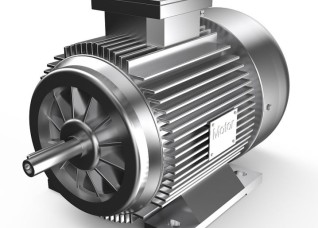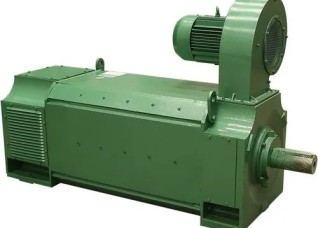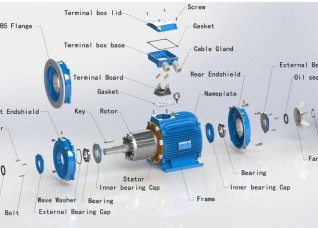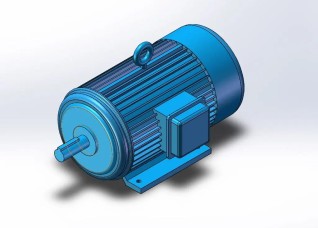Explanation Of The Motor Structure
Motor refers to an electromagnetic device that realizes the conversion or transfer of electrical energy according to the law of electromagnetic induction. It is represented by the letter M in the circuit. Its main function is to generate driving torque as a power source for electrical appliances or various machinery. The generator is represented by the letter G in the circuit. Its main function is to convert electrical energy into mechanical energy.
The motor mainly consists of an electromagnet winding or distributed stator winding for generating a magnetic field, a rotating armature or rotor and other accessories. Under the action of the rotating magnetic field of the stator winding, the current passes through the armature squirrel cage aluminum frame and is rotated by the magnetic field.
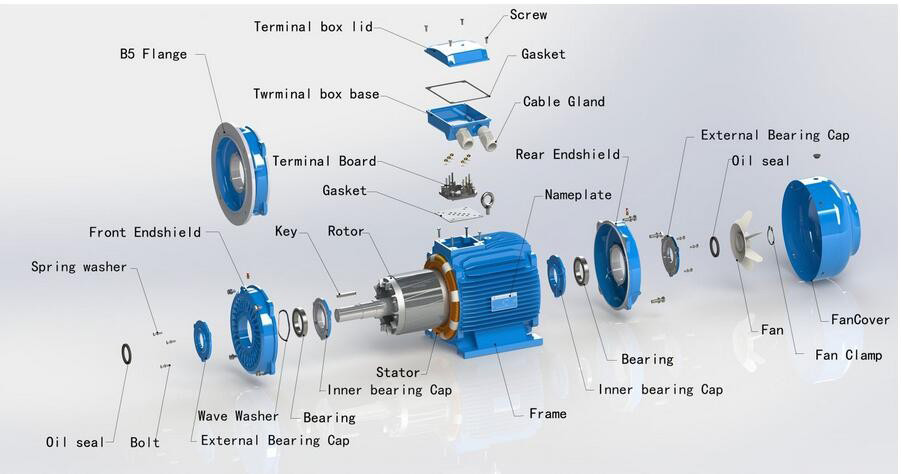
Motor manufacturing process
1. Machining technology: including rotor processing and shaft processing.
2. Iron core manufacturing process: including punching and lamination of magnetic pole cores.
3. Winding manufacturing process: including coil manufacturing, winding embedding and its insulation treatment (including short-circuit ring welding).
4. Manufacturing process of squirrel cage rotor: including lamination of rotor core and rotor die casting.
5. Motor assembly process: including the riveting of the bracket components, the riveting and assembly of the main and auxiliary stators of the motor, etc.
The basic structure of the motor
1. The structure of three-phase asynchronous motor consists of stator, rotor and other accessories.
(1) Stator (static part)
1. Stator core
Function: Part of the magnetic circuit of the motor and on which the stator windings are placed.
Structure: The stator core is generally punched and laminated by 0.35~0.5mm thick silicon steel sheets with insulating layers on the surface, and evenly distributed slots are punched in the inner circle of the core to embed the stator windings.
The stator core slot types are as follows:
Semi-closed slot: The efficiency and power factor of the motor are high, but the winding and insulation are difficult. Generally used in small low-voltage motors.
Semi-open slot: It can be embedded with formed windings, and is generally used for large and medium-sized low-voltage motors. The so-called formed winding means that the winding can be insulated in advance and then put into the slot. Open slot: It is used for inserting and placing formed windings, and the insulation method is convenient. It is mainly used in high-voltage motors.
2. Stator winding
Function: It is the circuit part of the motor, which is connected to three-phase alternating current to generate a rotating magnetic field.
Structure: It is composed of three windings with the same structure, which are separated by 120° electrical angle and arranged in teams. The coils of these windings are respectively embedded in the slots of the stator according to certain rules.
The main insulation items of the stator winding are as follows: (guarantee the reliable insulation between the conductive parts of the winding and the iron core and the reliable insulation between the winding itself).
1) Insulation to ground: the insulation between the stator winding as a whole and the stator core.
2) Interphase insulation: insulation between stator windings of each phase.
3) Turn-to-turn insulation: insulation between turns of each phase stator winding.
Wiring inside the motor junction box:
There is a wiring board in the motor junction box. The six wire ends of the three-phase winding are arranged in two rows up and down, and it is stipulated that the three wiring piles in the upper row are numbered from left to right as 1 (U1), 2 (V1), 3 (W1), the three wiring posts in the lower row are numbered 6 (W2), 4 (U2), 5 (V2) from left to right. Connect the three-phase windings in star connection or delta connection. All manufacturing and maintenance should be arranged according to this serial number.
3. Machine base
Function: Fix the stator iron core and the front and rear cover to support the rotor, and play the role of protection and heat dissipation.
Structure: The frame is usually cast iron, the frame of the large asynchronous motor is generally welded with steel plates, and the frame of the micro motor is made of cast aluminum. There are cooling ribs on the outside of the frame of the enclosed motor to increase the heat dissipation area, and the end caps at both ends of the frame of the protective motor are provided with ventilation holes, so that the air inside and outside the motor can be directly convected to facilitate heat dissipation.
(2) Rotor (rotating part)
1. The rotor core of the three-phase asynchronous motor:
Function: As part of the magnetic circuit of the motor and to place the rotor winding in the core slot.
Structure: The material used is the same as the stator, which is punched and laminated from 0.5 mm thick silicon steel sheets. The outer circle of the silicon steel sheet is punched with evenly distributed holes for placing the rotor windings. Usually, the inner circle of the silicon steel sheet after the stator core is punched is used to punch the rotor core. Generally, the rotor core of small asynchronous motors is directly press-fitted on the rotating shaft, and the rotor cores of large and medium-sized asynchronous motors (with a rotor diameter of 300-400 mm or more) are pressed on the rotating shaft with the help of the rotor bracket.
2. Rotor winding of three-phase asynchronous motor
Function: Cutting the rotating magnetic field of the stator generates induced electromotive force and current, and forms electromagnetic torque to make the motor rotate.
Structure: divided into squirrel cage rotor and wound rotor.
1) Squirrel-cage rotor: The rotor winding consists of a plurality of bars inserted into the rotor slots and two annular end rings. If the rotor core is removed, the entire winding looks like a squirrel cage, so it is called a cage winding. Small cage motors use cast aluminum rotor windings, and for motors above 100KW, copper bars and copper end rings are welded.
2) Wound rotor: The wound rotor winding is similar to the stator winding, and it is also a symmetrical three-phase winding. Generally, it is connected in a star shape. External circuit connection.
Features: The structure is more complicated, so the application of the wound motor is not as extensive as that of the squirrel cage motor. However, additional resistors and other elements are connected in series in the rotor winding loop through the collector ring and the brush to improve the starting, braking performance and speed regulation performance of the asynchronous motor. Therefore, the equipment for smooth speed regulation within a certain range is required, such as Used on cranes, elevators, air compressors, etc.
(3) Other accessories of three-phase asynchronous motor
1. End cover: support.
2. Bearing: connecting the rotating part and the stationary part.
3. Bearing end cover: protect the bearing.
4. Fan: Cooling the motor.
2. The DC motor adopts an octagonal full-stack structure, which not only has a high space utilization rate, but also can withstand pulsating current and rapid load current changes when powered by a static rectifier. DC motors generally do not have series-excited windings, and are suitable for automatic control technologies that require forward and reverse motor rotation. It can also be made with series excitation windings according to user needs. Motors with a center height of 100-280mm have no compensation winding, but motors with a center height of 250mm and 280mm can be made with compensation windings according to specific conditions and needs, and motors with a center height of 315-450mm have compensation windings. The installation dimensions and technical requirements of the motor with a center height of 500-710mm conform to the IEC international standard, and the mechanical dimension tolerance of the motor conforms to the ISO international standard.



